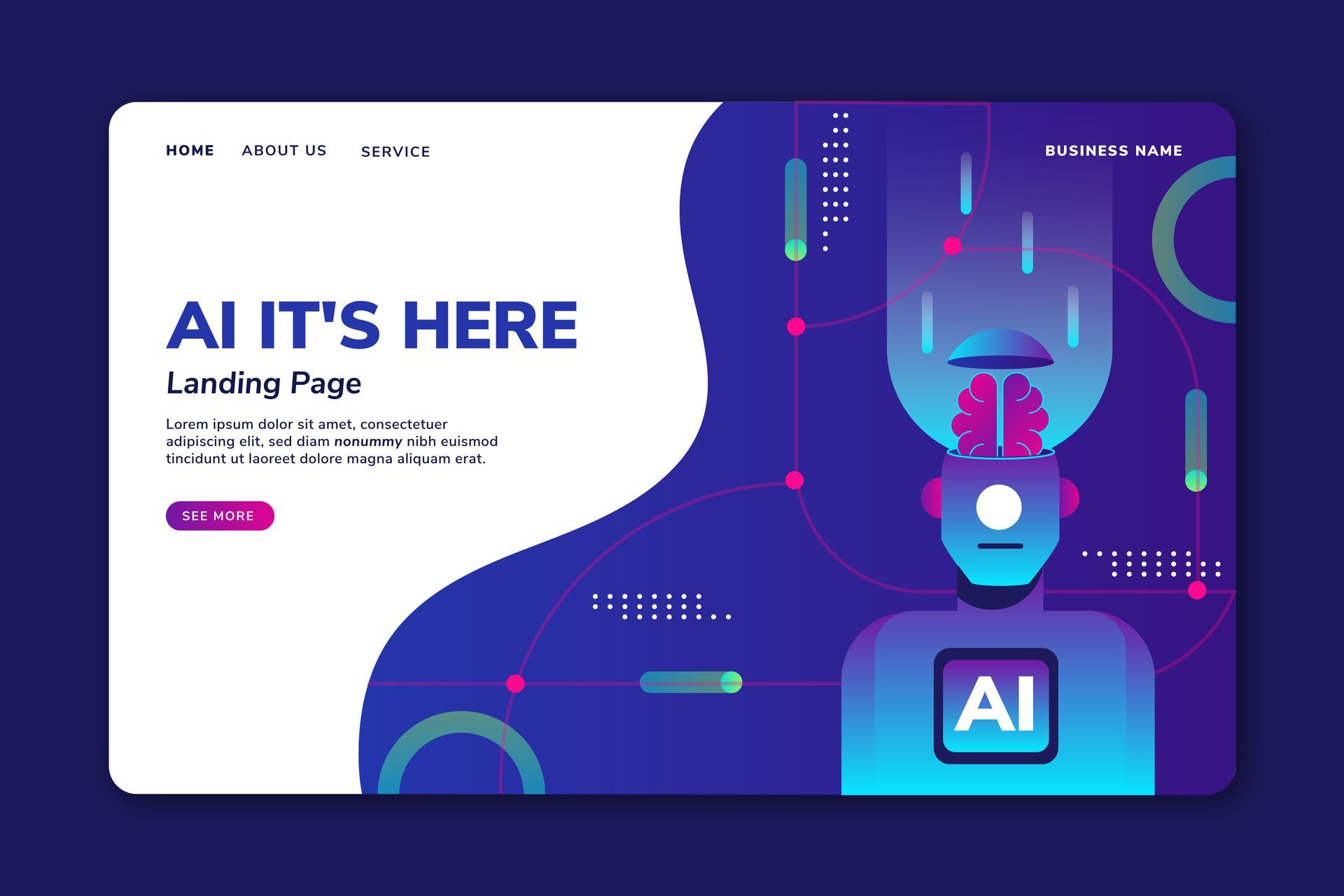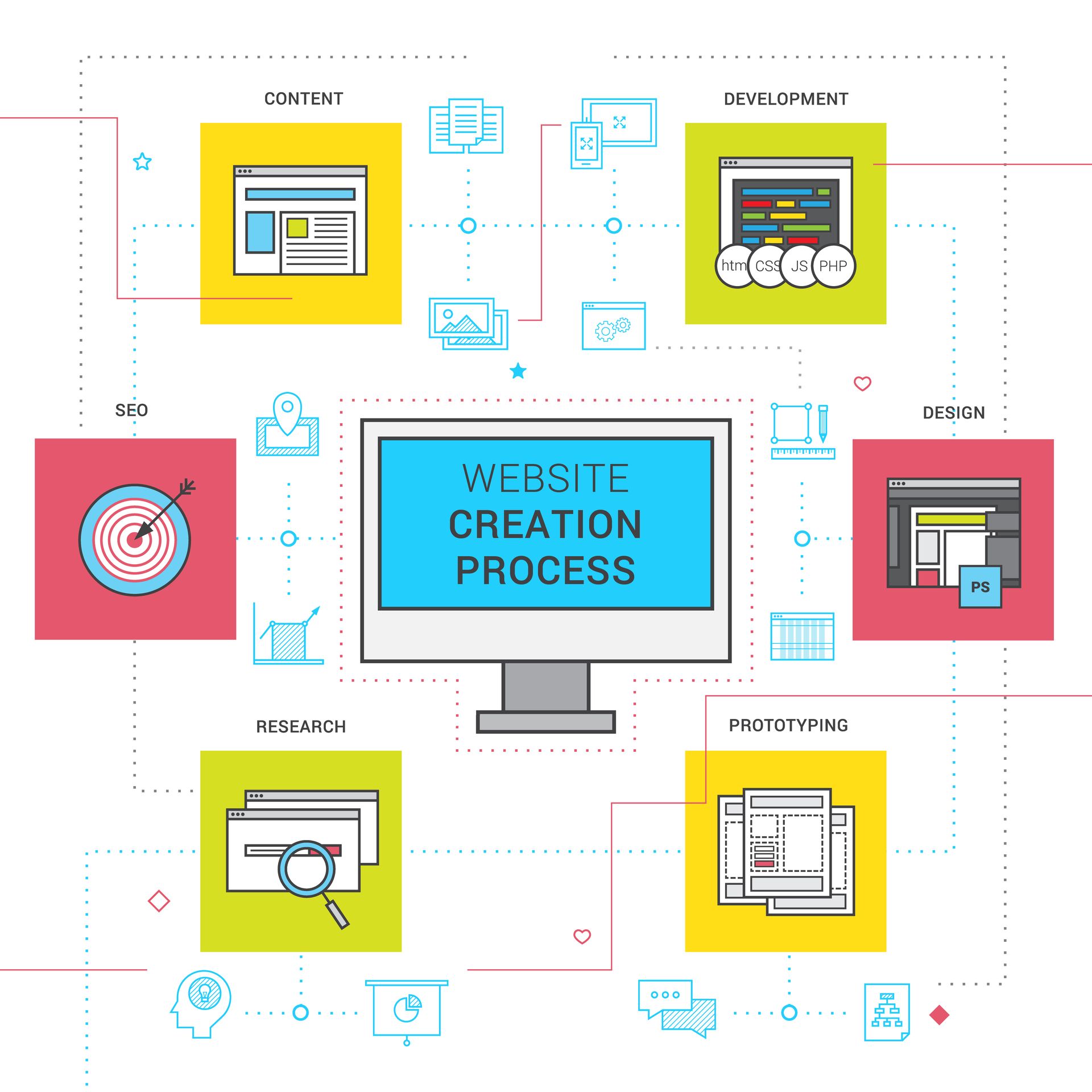A website isn't just a digital business card. It’s your first impression, your salesperson, and your customer service rep all rolled into one. An effective website engages visitors, guides them smoothly through content, and converts them into customers or subscribers. If your website is confusing, slow, or outdated, you’re losing valuable opportunities.
Here’s a look at the seven key design principles that make a website truly effective.
Why Website Design Matters for User Experience and Success
A well-designed website makes navigation seamless, builds trust and credibility, and keeps visitors engaged, leading to lower bounce rates. When visitors can easily find what they need, they’re more likely to stay longer, interact with your content, and take action by making a purchase, signing up for a newsletter, or reaching out for more information.
On the other hand, a poorly designed site creates frustration and confusion, driving users away before they even get a chance to see what you offer. Slow load times, cluttered layouts, and difficult navigation can quickly discourage potential customers. By following these seven key design principles, you can create a website that not only looks great but also provides a seamless, user-friendly experience that keeps visitors engaged and helps achieve your business goals.
The 7 Key Design Principles for an Effective Website
A great website is more than just an attractive layout—it needs to function smoothly, provide a seamless user experience, and guide visitors toward their goals. If you want users to make a purchase, sign up for a service, or engage with your content, your site must be intuitive, fast, and visually appealing. The following seven design principles will help ensure your website is practical, user-friendly, and optimized for success.
1. Clarity and Simplicity
A cluttered website confuses visitors. Simplicity helps people find what they need quickly without distractions. Think about Apple’s website. It’s minimalist but effective because it focuses on key elements without unnecessary clutter.
- Use a clean layout – Avoid too many colors, fonts, or flashy animations.
- Keep the text readable – Use clear fonts like Arial, Roboto, or Open Sans.
- Limit color choices – Stick to 2-3 main colors that align with your brand.
- Whitespace is your friend – Spacing makes content easier to read.
2. Navigation
If visitors can’t find what they’re looking for in seconds, they leave. Good navigation makes browsing effortless. Sites like Amazon use breadcrumbs to improve navigation, making it easier for users to go back to previous categories.
- Use a simple menu – Keep it at the top with clear categories.
- Add a search bar – Especially useful for blogs or e-commerce sites.
- Use breadcrumbs – Helps users know where they are on the site.
3. Visual Hierarchy
Your website should naturally guide visitors' eyes to the most important elements. People scan pages, so structure matters.
- Headings should be bold and clear – H1 for main topics, H2 for subtopics.
- Use larger fonts for important messages – Make headlines stand out.
- Place call-to-action (CTA) buttons in visible spots – Use contrasting colors.
For example, a landing page with a big, bold headline, a subheading that explains the value, and a CTA button in a bright color leads to more conversions.
4. Mobile-Friendliness
More than half of web traffic comes from mobile devices. If your site isn’t mobile-friendly, you’re losing visitors. Google’s Mobile-Friendly Test tool can check if your site is optimized for mobile users.
- Use a responsive design – Ensures the site adjusts to different screen sizes.
- Test on multiple devices – Check how it looks on phones, tablets, and desktops.
- Keep buttons easy to tap – No one likes trying to click tiny buttons.
5. Speed and Performance
Nobody likes a slow website. A delay of just one second can drop conversions by 7%. Fast websites keep users engaged. Google PageSpeed Insights can help analyze and improve site speed.
Ways to improve speed:
- Compress images – Large images slow down loading times. Use tools like TinyPNG.
- Enable browser caching – Reduces load time for returning visitors.
- Use a content delivery network (CDN) – Distributes content faster worldwide.
- Minimize unnecessary plugins – Too many plugins slow down performance.
6. Content and Readability
Even with a great design, content is king. People visit your site for information, solutions, or entertainment. Well-written content boosts SEO and keeps users on your site longer.
- Keep paragraphs short – Walls of text scare readers away.
- Use bullet points – Helps break up information for easy reading.
- Write in a conversational tone – Make it engaging and easy to understand.
7. Consistency and Branding
A website should feel like your brand across every page. Consistency builds trust. A strong, consistent brand identity improves recognition and makes visitors feel at home.
- Use the same color scheme and typography throughout
- Ensure logo placement is consistent – Usually in the top-left corner
- Maintain the same voice and tone in your content
How to Apply These Principles to Your Website
These principles don’t require a complete redesign. Small changes can make a big difference in user experience and conversions.
- Start with a site audit – Identify weak spots in speed, design, or navigation.
- Get user feedback – Ask customers what they struggle with on your site.
- Use analytics tools – Google Analytics helps track visitor behavior.
- Test and refine – Make gradual improvements based on data.
For businesses looking to build or improve their website, Spearlance Media offers custom website design, UX optimization, and performance enhancements. Their team focuses on creating websites that are visually appealing, highly functional, and optimized for conversions. From improving navigation and load speed to enhancing user experience and branding, they provide tailored solutions to meet your business needs.
If you need a complete website overhaul or just small adjustments to improve usability and performance, Spearlance Media can help craft a professional, high-performing site that aligns with your brand and business goals.
Conclusion
A website isn't just about looking nice. It's about functionality, usability, and delivering value. By applying these seven key design principles, you can create a site that keeps visitors engaged, improves conversions, and builds trust!
Ready to improve your website? Start implementing these principles today, and watch your site become more effective!

















